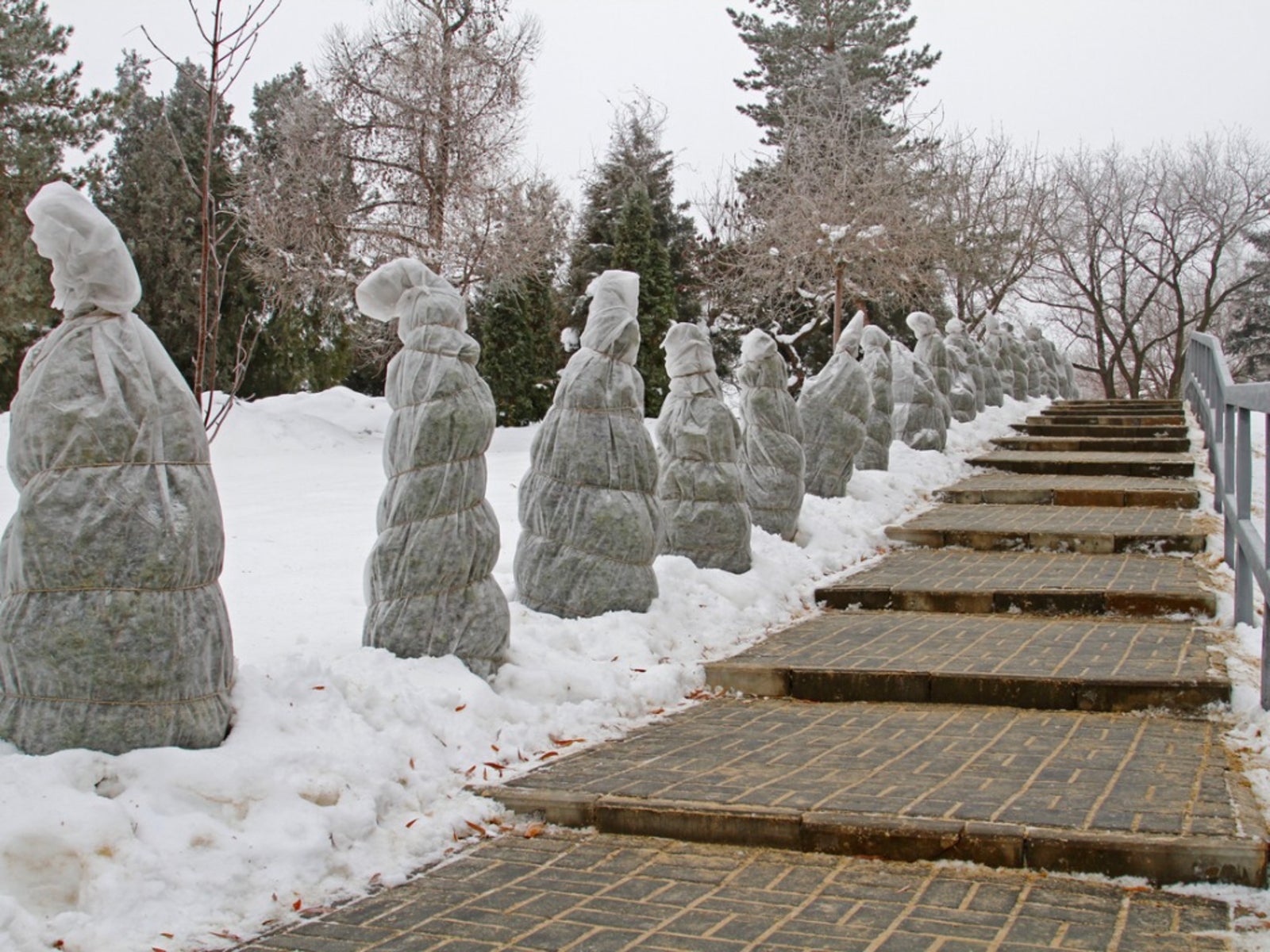How To Protect Outdoor Plants In Winter
Make a fall plan to protect tender outdoor plants through the winter. Extreme cold can scald plants, freeze their roots, cause foliar damage and even death. Plan ahead.


Caroline Bloomfield
Fall is the best time to get out in the garden and secure your sensitive and tender plants. Protecting plants in winter can help prevent winter scald, frozen roots, foliar damage, and even death.
Cold weather plant protection takes a little pre-planning and some equipment in harsher zones. In mild and temperate climates, it usually just means re-mulching and dividing peonies and other early spring bloomers.
Fall maintenance should include a plan for winter protection for plants and winter plant covers.
Winter Protection for Plants
- One of the easiest and most effective ways to protect sensitive plants is by mulching.Mulching with an organic material will also help enhance the soil as the mulch decomposes and releases nutrients to the earth. In autumn, pull back old mulches from the base of plants and spread a new 3 inch (8 cm) layer around them out to the drip line. Leave a 1/2-inch (1 cm) space around the plant's stem to allow air circulation and prevent rot.
- Wrap tender tree trunks with burlap or white wash them to prevent winter sunscald.
- .Rake a mound of soil around the base of roses to a depth of 12 to 18 inches (31-46 cm) to protect the crown. Apply an anti-desiccant to new foliage on bushes and shrubs that will shield the foliage from wind and winter sun.
- Lay a layer of 6 to 8 inches (15-20 cm) of wood chips or straw over perennial and flower beds.
- Protect outdoor plants in winter with screens or frames erected on the southwest side and make sure to water them before a freeze. Wet soils prevent freeze injury to plant roots because moist soil holds more heat than dry soil.
- Keep potted plants on dollies so you can wheel them to a sheltered location or take them indoors when temperatures drop.
- It can be beneficial to create a structure or cage around some plants. A chicken wire cage is useful as a cold barrier for trunks when filled with straw.
- Use twine to wrap tall shrubs, such as arborvitae. This brings the limbs in closer so they don't splay and break if snow builds up on them. Use stakes to prop up horizontal limbs that might break if snow makes them too heavy.
How to Protect Plants from Freezing
Seasoned gardeners know their zones and are prepared with materials to protect plants from freezing.
Cold weather plant protection can be as simple as using a blanket. Have frost barrier fabric on hand for fruit trees in spring. A swath of burlap is also useful to cover plants in the event of a freeze.
These types of winter protection for plants may be left in place for the duration of the freeze. Covers should be removed during the daytime. Covers must reach all the way to the root zone to be the most effective.
Stake or tie them down but resist the urge to bind them around the plant. This can cause stem and foliar injury.
Gardening tips, videos, info and more delivered right to your inbox!
Sign up for the Gardening Know How newsletter today and receive a free copy of our e-book "How to Grow Delicious Tomatoes".

Bonnie Grant is a professional landscaper with a Certification in Urban Gardening. She has been gardening and writing for 15 years. A former professional chef, she has a passion for edible landscaping.
- Caroline BloomfieldManager of Marketing Communications
-
 Looking For Plants To Give You The Soft And Fuzzies? Try These 5 Fuzzy Leaf Plant Options
Looking For Plants To Give You The Soft And Fuzzies? Try These 5 Fuzzy Leaf Plant OptionsLovers of texture, drama, silver foliage and tactile plants will adore these special sensory garden additions. These fuzzy leaf plant options will leave you all aglow
By Susan Albert
-
 Get Ready For A Summer Of Hummers! Grow These Full Sun Hummingbird Plants and Flowers
Get Ready For A Summer Of Hummers! Grow These Full Sun Hummingbird Plants and FlowersIf you’re lucky enough to enjoy a sunny backyard, make sure you are maxing out on your pollinator opportunities and grow these full sun hummingbird plants and flowers
By Tonya Barnett